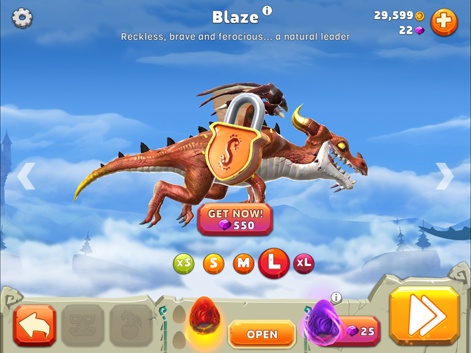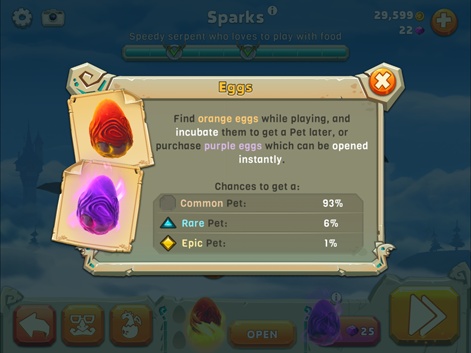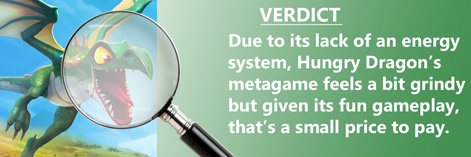Welcome to The In-App Purchase Inspector– our regular look at free-to-play mobile game monetisation from the consumer's perspective.
In each instalment, we consider how well a developer has designed its in-app purchase retailing to work alongside the overall gameplay and metagame experience.
This time we're looking at Ubisoft’s Hungry Shark series expansion Hungry Dragon.
Everyone wants a dragon
With over 500 million downloads of Hungry Shark games since developer Future Games of London launched Hungry Shark Part 1 in 2012, it’s no surprise this is a very casual experience.
From the getgo, this means Hungry Dragon is all about gameplay. You fly your dragon around the skies, munching whatever comes into sight, collecting gold and treasure, and occasionally breathing fire as you power up.
As an ‘endless runner’, the end of the mission is always close. Whether triggered by flying into a mine, been eaten by another dragon, bashed by an ogre, or just running out of food, the Game Over prompt is the game’s key moment for an impulse decision.

Given the lightweight monetisation, this isn’t an impulse purchase, however, merely the opportunity to watch a rewarded video to continue or spend some hard currency to continue. You can watch a maximum of two videos per run and each time you use hard currency (Gems) to continue, the amount required increases.
More discrete monetisation is linked to the stars of the shows - the dragons themselves. Customising the ones you have and unlocking new ones is the game’s main engagement - and monetisation - loop.
Bigger dragons, more fun
As with the shark games, dragons are arranged in terms of their size from XS through XL. The larger the dragon, the more areas of the map can be accessed and the more things eaten, but the main reason for upgrading is the simple fact, the bigger the dragon, the cooler they are.
Unlocking dragons is simply a case of playing the game and collecting the required soft currency (Gold). Given there’s no energy system and you can play for a long as you like, earning enough currency is a very grindy process. This is unlikely to bother kids with plenty of time on their hands, and those who want to progress faster can swap Gems for Gold.
Some dragons can also be purchased outright with Gems. For example, large dragon Blaze cost 550 Gems (around £40/$50). That’s expensive for what’s effectively an enhanced cosmetic item but that’s the deal when a F2P mobile game doesn’t have an energy system to gate grinding.

A secondary revenue stream comes in the form of the Pet power-up system; there are 53 ranked from common to epic that can be attached to your dragon, boosting attributes such as health, speed etc. These are randomly dropped from eggs you collect in-game, which are then incubated over time or purchased directly at 25 Gems a pop ($2.50).
You can also buy costumes for your dragons, which provide attribute boosts.
Keep on playing
When it comes to retention, Hungry Shark’s focus - again - is fairly lightweight.
With no attempt to shoe-horn in a guild system, each player has a set of ongoing missions to fulfil for Gold rewards, while five chests are also hidden in the game to provide a daily reward structure. Longer term collaborative quests provide a reward structure for the entire player base, and you can join in with regular tournaments too.
And that is as it should be. Developers have learned that when it comes to such casual games, especially those that scale so young, gaining mass scale and then monetising with rewarded video ads is what works.
In that context, retention is key and that means keeping gamers playing and grinding towards their next dragon: in other words, keeping them hungry for dragons.






















